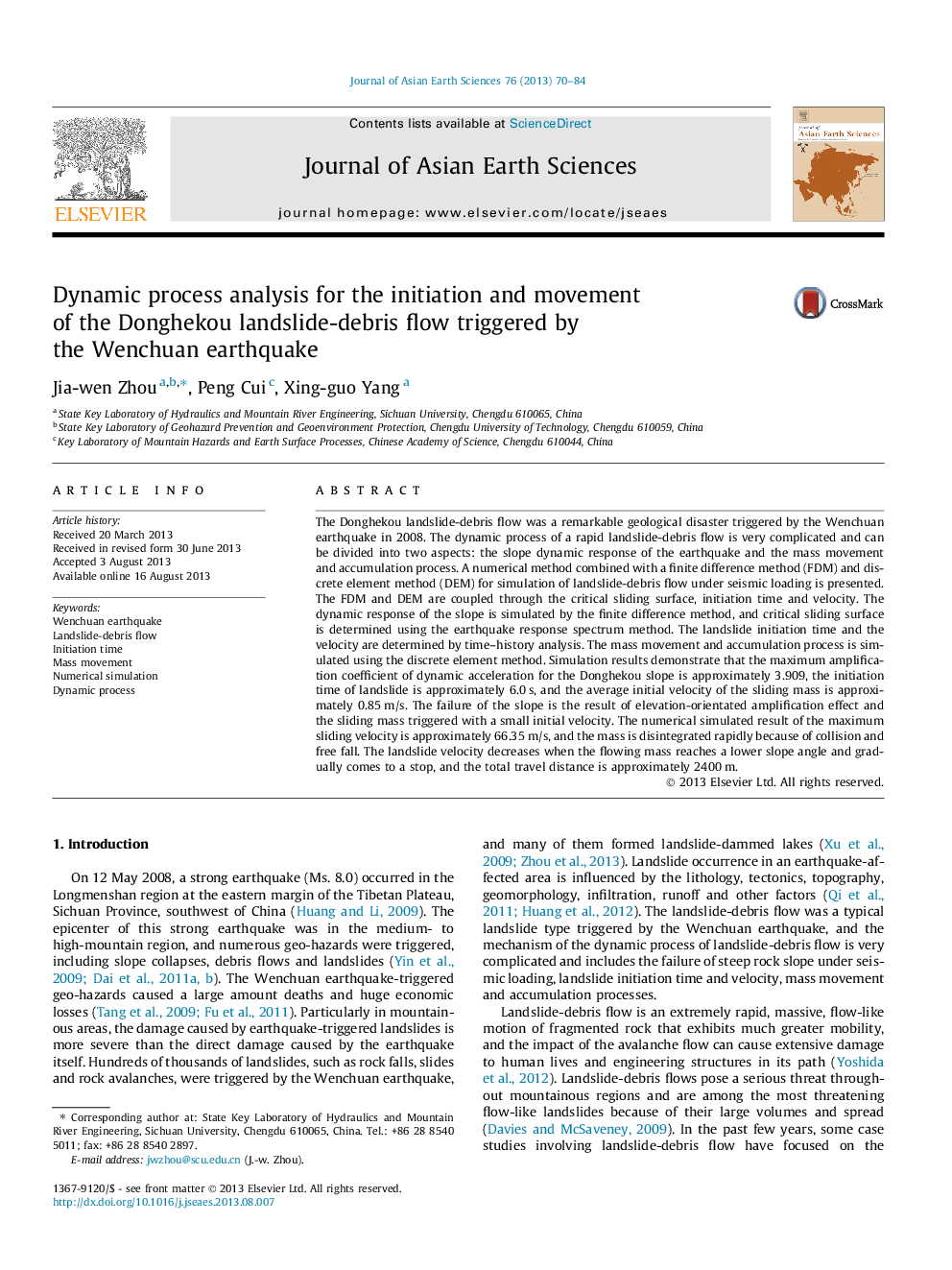| کد مقاله | کد نشریه | سال انتشار | مقاله انگلیسی | نسخه تمام متن |
|---|---|---|---|---|
| 4731015 | 1640391 | 2013 | 15 صفحه PDF | دانلود رایگان |

• FDM and DEM are coupled to simulate the whole landslide process.
• FDM and DEM are coupled through the dangerous sliding surface, initiation time and velocity.
• Sensitivity analysis of joint parameters is carried out.
• Simulated result is validated by a slab model based on energy conservation.
The Donghekou landslide-debris flow was a remarkable geological disaster triggered by the Wenchuan earthquake in 2008. The dynamic process of a rapid landslide-debris flow is very complicated and can be divided into two aspects: the slope dynamic response of the earthquake and the mass movement and accumulation process. A numerical method combined with a finite difference method (FDM) and discrete element method (DEM) for simulation of landslide-debris flow under seismic loading is presented. The FDM and DEM are coupled through the critical sliding surface, initiation time and velocity. The dynamic response of the slope is simulated by the finite difference method, and critical sliding surface is determined using the earthquake response spectrum method. The landslide initiation time and the velocity are determined by time–history analysis. The mass movement and accumulation process is simulated using the discrete element method. Simulation results demonstrate that the maximum amplification coefficient of dynamic acceleration for the Donghekou slope is approximately 3.909, the initiation time of landslide is approximately 6.0 s, and the average initial velocity of the sliding mass is approximately 0.85 m/s. The failure of the slope is the result of elevation-orientated amplification effect and the sliding mass triggered with a small initial velocity. The numerical simulated result of the maximum sliding velocity is approximately 66.35 m/s, and the mass is disintegrated rapidly because of collision and free fall. The landslide velocity decreases when the flowing mass reaches a lower slope angle and gradually comes to a stop, and the total travel distance is approximately 2400 m.
Journal: Journal of Asian Earth Sciences - Volume 76, 25 October 2013, Pages 70–84